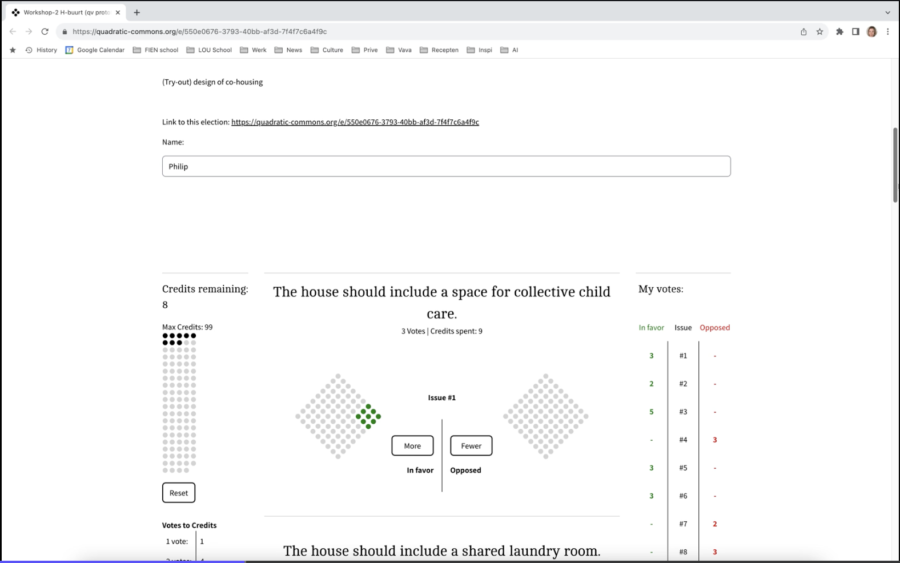Through our situated research, we noticed there is desire amongst resource sharing communities for collective decision-making procedures that speak to both local community values, and the broader principles of the commons. To explore this further designer-researcher Tara Karpinski conducted a workshop with members of the Community Land Trust H-buurt.
One remarkable challenge all ‘becommomning’ communities (communities in the process of initiating a commons) face is choosing how to decide together– in other words, deciding on a means to make group decisions. Burgeoning resource communities must make critical choices to organise the design of their future commons. In the case of co-housing, this could be about allocation procedures or the design of common areas.
This led Tara to investigate the affordances of a procedure called quadratic voting. Because existing interfaces tend to be overwhelming in their complexity, she designed a custom prototype and tested this the workshop.
In quadratic voting individuals are allocated votes to express the ‘degree of their preferences, rather than just the direction.’ Workshop participants received 99 credits each, which could be allocated across different issues on the ballot to signal the intensity of their conviction per issue. The voting-round outcome includes not only a ranking of the issues with the most votes, but also an assemblage of analytics that can be insightful and helpful for both community members and commons-professionals to guide internal processes.
Some take-aways from the workshop
Questions on the ballot can be understood and interpreted in various ways. This raises the question how to craft them, and who should do this. Here, we envision a community professional who in addition to hosting the vote, can explain more accurately with which intention a question has been formulated.
The voting outcome encompasses a myriad of highly valuable information; but this must be carefully sifted through to determine potential applications. This makes communicating the overall outcome to voters who are eager to immediately hear results challenging. Some results can be communicated right away, but almost all issues hold within them layers of nuanced information that requires timely professional review and mediation.
The voting outcome pointed largely to commonality, but there was also one clear instance of polarisation. The analytics flagged this as a ‘hot topic’, thus providing a clear indicator that this particular issue demanded more attention and deliberation from the group.
The voters pointed out that viewing the overall quadratic voting outcome as opposed to a spread of individual responses felt more harmonious. There was no need for this community to scrutinise votes for– or against on an individual level.
In general, presenting the voting outcomes triggered lively and detailed discussions about the issues on the ballot. This also raises the question to what extend should a voting outcome be binding, or a springboard toward deeper conversations about collective issues.
